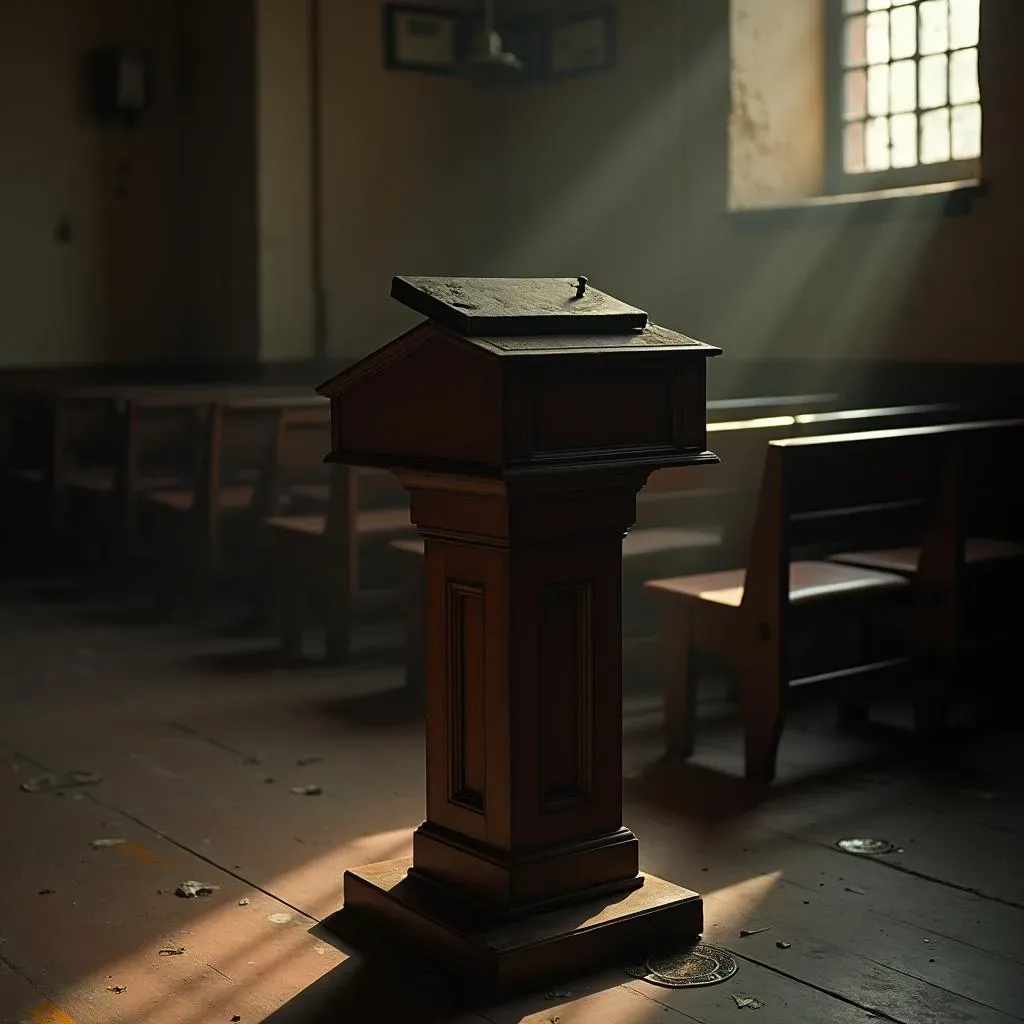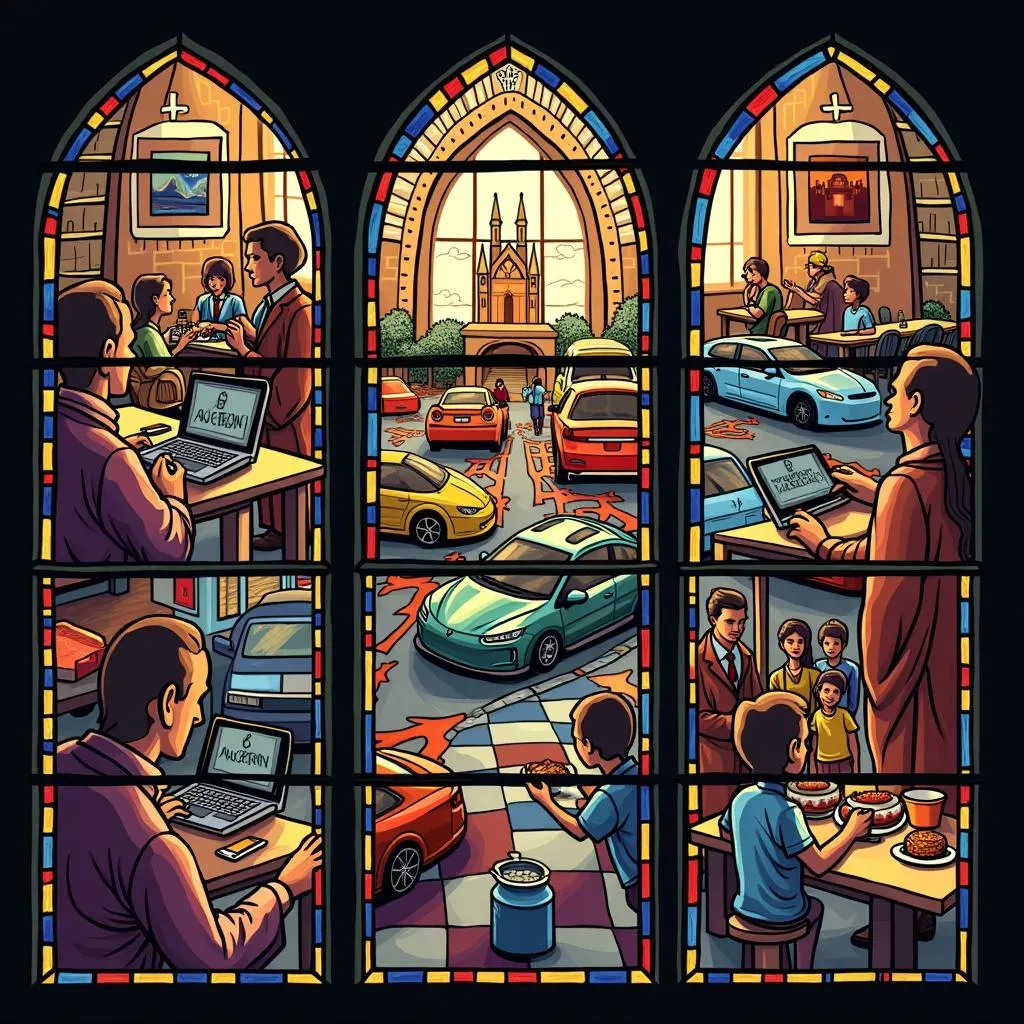Table of Contents
Remember early 2020? Suddenly, crowded church halls and potluck dinners for a cause felt like relics from another era. The COVID-19 pandemic hit, and traditional ways of gathering, including essential fundraising, came to a screeching halt. Churches everywhere faced a stark reality: adapt or watch vital support dwindle. This wasn't just about collecting funds; it was about maintaining community and continuing crucial mission work when people needed it most. Finding effective fundraising ideas for church during COVID became an urgent priority, requiring a pivot to new strategies and technologies many had never considered before. Gone were the bake sales and silent auctions in person. In their place, a new landscape emerged, demanding creativity, digital savviness, and a renewed focus on connection. This article digs into how churches navigated this challenge, exploring the innovative approaches that kept the lights on and the ministries active.
Why Traditional Church Fundraising Ideas Crumbled During COVID

Why Traditional Church Fundraising Ideas Crumbled During COVID
Let's be honest, church fundraising before 2020 often relied on a few key ingredients: showing up, shaking hands, maybe buying a slightly burnt casserole, and passing a plate. Think crowded bazaars, pancake breakfasts where you sat elbow-to-elbow, and those annual pledge drives announced from the pulpit to a packed sanctuary. When COVID-19 slammed the door shut on large gatherings, these time-tested methods went belly up almost overnight. Social distancing wasn't just a suggestion; it was the law, making potlucks impossible and traditional offertory collections awkward, if not downright dangerous. This sudden inability to gather the flock physically meant that the very foundation of many church fundraising ideas crumbled during COVID, leaving finance committees scratching their heads and wondering how exactly you sell raffle tickets or collect loose change six feet apart, or worse, when no one is even in the building.
So, what exactly went missing?
- In-person gatherings (no bake sales, no silent auctions in the hall)
- Physical collection plates (awkward or impossible with distancing)
- Face-to-face appeals (hard to connect emotionally from afar)
- Community events built on proximity (dinners, fairs, etc.)
Virtual & Digital Fundraising Ideas for Church During COVID

Virtual & Digital Fundraising Ideas for Church During COVID
With the old ways out, churches had to get creative fast. This is where the digital world stepped in, offering a lifeline with Virtual & Digital Fundraising Ideas for Church During COVID. Suddenly, everything from weekly tithes to major campaigns moved online. Think of it like this: instead of passing a velvet plate, you were clicking a button. Instead of gathering for a spaghetti dinner, you were joining a virtual trivia night or an online talent show. Churches started setting up dedicated online donation pages, leveraging platforms that made giving as easy as ordering takeout. They used social media not just for announcements, but for sharing compelling stories and direct calls to action. It was a steep learning curve for many, sure, but it opened up possibilities that weren't tied to physical location or attendance numbers.
Some popular virtual/digital tactics included:
- Online giving platforms (recurring donations became easier)
- Virtual events (concerts, trivia, game nights)
- Social media campaigns (sharing needs, celebrating impact)
- Online auctions or marketplaces (selling goods virtually)
- Text-to-give options (quick donations via phone)
Adapting Classic Fundraising Ideas for Church During COVID

Adapting Classic Fundraising Ideas for Church During COVID
The Potluck Goes Digital (Sort Of)
so you couldn't cram everyone into the fellowship hall for Aunt Carol's famous green bean casserole. That didn't mean you had to ditch the *idea* of community through food entirely. Many churches got creative, shifting classic food-based fundraising ideas for church during COVID into take-out or delivery models. Think pre-sold meal kits for holidays, drive-thru BBQ pickups, or partnering with a local restaurant for a percentage night where people ordered food to go. It wasn't the same as sharing a table, but it kept the revenue stream flowing and gave people a tangible way to support the church while getting something they actually wanted (or needed) in return. It stripped away some of the social interaction, sure, but the core transaction – food for funds – remained viable with a logistical facelift.
Silent Auctions, Loud Online Bidding
Silent auctions used to involve crowded tables, scribbled bids on paper slips, and that awkward hover near the item you really wanted. Taking fundraising ideas for church during COVID online meant this entire process changed. Churches moved their auctions to dedicated online platforms or even used social media groups. People could browse items from their couch, place bids digitally, and get instant notifications if they were outbid. It lacked the immediate buzz of an in-person event, but it often reached a wider audience, including folks who couldn't physically attend before. Plus, no more deciphering terrible handwriting on bid sheets.
What did these adapted classics look like?
- Drive-thru or take-out meal events (BBQ, spaghetti, fish fry)
- Online silent auctions or raffles
- Virtual talent shows or concerts with ticket sales
- Pre-sold holiday items (pies, wreaths, gift baskets) for pickup/delivery
- "Sponsor-a-thing" campaigns (e.g., sponsor a pew cushion, a bible study book)
The Reality Check on Adaptation
Adapting classic fundraising ideas for church during COVID wasn't always smooth sailing. Not everyone had reliable internet access, and some older members struggled with the technology shift. The personal touch that made many traditional events successful was harder to replicate online. You couldn't easily chat up a potential donor while they browsed the craft table. These adapted events required different skill sets – managing online platforms, coordinating contactless pickups, digital marketing. It highlighted a digital divide that some congregations had to actively work to bridge, perhaps by offering phone-in options or buddying up tech-savvy members with those less comfortable online. It proved that while adaptation was necessary, it came with its own set of challenges and didn't magically solve every problem.
Keeping the Flock Connected: Community & Engagement Beyond Donations

Keeping the Flock Connected: Community & Engagement Beyond Donations
More Than Just Asking for Money
Look, finding clever fundraising ideas for church during COVID was crucial for the budget, but let's not pretend it was *only* about the money. The real crisis for many congregations was the sudden isolation. People couldn't gather for worship, for coffee hour, for Bible study. That sense of belonging, that weekly rhythm of seeing friendly faces – it evaporated. Churches quickly realized that keeping the flock connected wasn't just a nice-to-have; it was essential for morale, for spiritual health, and frankly, for keeping people invested enough to even *consider* donating. If folks felt abandoned or disconnected, why would they contribute to an institution they no longer felt part of? The focus had to shift, at least partially, from transactional giving to relational connection.
Building Bridges in the Digital Divide
So, how did churches actually *do* this? It wasn't always smooth. For some, it meant figuring out Zoom for the first time, wrestling with mute buttons and echo. For others, it was launching a private Facebook group or starting a weekly email newsletter that felt personal, not just programmatic. They held virtual coffee hours, online prayer meetings, even digital potlucks where everyone ate their own food but chatted via webcam. Phone trees became vital again, ensuring members who weren't online weren't forgotten. It required intentional effort to reach out, to check in, and to create moments of shared experience, even if they were mediated by a screen or a phone line. This consistent effort to maintain community was a quiet, often unsung, part of the overall strategy that supported fundraising ideas for church during COVID.
- Hosting virtual coffee hours via video calls.
- Sending personalized emails or making phone calls to members.
- Creating private social media groups for church members.
- Organizing contactless drop-offs of care packages or notes.
- Offering online classes or Bible studies.
The Ripple Effect: Engagement and Generosity
Here's the thing: when people feel connected, valued, and part of something meaningful, they are more likely to support it financially. It's not rocket science. That consistent effort to engage the congregation, to keep them feeling like a community even when physically apart, paid dividends beyond just morale. It reinforced why the church's mission mattered. When people saw how the church was adapting, reaching out, and continuing its work under difficult circumstances – whether through online services or new community support initiatives – they were more motivated to give. The virtual trivia night wasn't just a fundraiser; it was a reminder that the church was still a place of joy and connection. The weekly check-in call wasn't asking for money; it was building a relationship that encouraged generosity when the ask eventually came, often through those new fundraising ideas for church during COVID.
The Enduring Art of Church Fundraising: Lessons Learned
The pandemic forced a hard reset on how churches approached their finances and community engagement. Traditional methods, reliable for decades, proved fragile when faced with physical separation. What emerged was a necessary, sometimes awkward, leap into the digital realm and a forced creativity in adapting old standbys. The scramble for fundraising ideas for church during COVID wasn't just about keeping the doors open; it highlighted the fundamental need for flexibility and the power of digital tools to bridge physical gaps. While the immediate crisis may have eased for some, the lessons remain: relying solely on outdated models is a gamble, and maintaining connection, online or off, is paramount to sustaining support. The future of church fundraising likely involves a hybrid approach, retaining the useful digital innovations born from necessity while cautiously reintroducing cherished in-person events.
